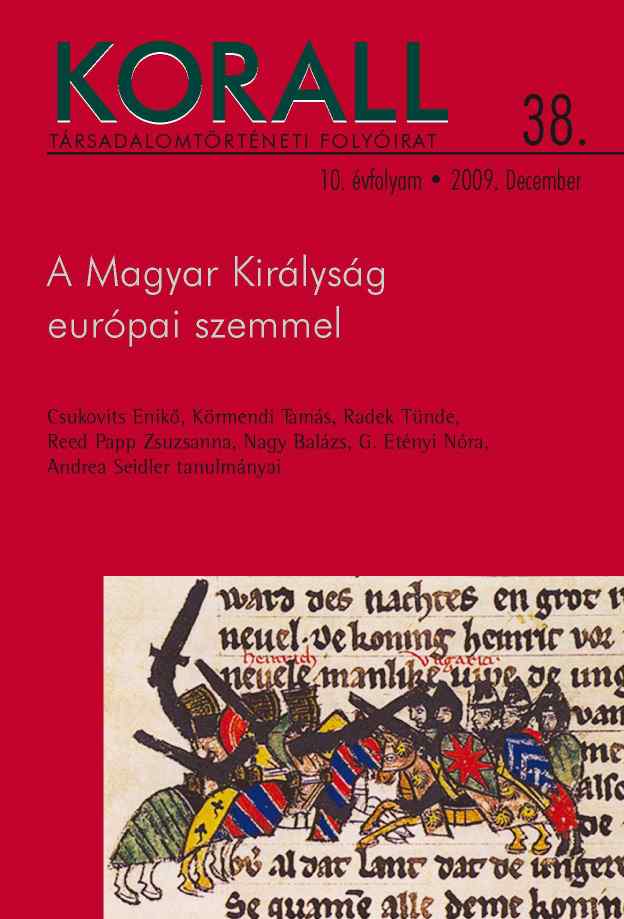Források, műfajok, lehetőségek: a középkori Magyarország-kép elemei
Sources, Genres, Possibilities: The Elements of the Medieval Image of Hungary
Author(s): Enikő CsukovitsSubject(s): History
Published by: KORALL Társadalomtörténeti Egyesület
Summary/Abstract: There are numerous sources providing insight into the medieval image of Hungary and Hungarians: in addition to geographical writings, books, and travel literature, there is a wealth of geographical-ethnological information contained in historiography, an increasing number of literary works, and in documents originally not intended for the public, such as legatine reports. Examining these sources, the present study addresses two questions: first, the extent to which modern historians use different sources than their medieval colleagues; second, the possibility of an insight into the perceptions and knowledge of Hungary and Hungarians in medieval Western Europe. Surviving sources provide information to varying depth and degree. Medieval travel accounts seldom include reports about Hungary, and often at a tangent. The first modern geographical descriptions written in the fifteenth century were not yet proper geographical works, and contained limited information about the country and its inhabitants. The richest source of consistent information about the medieval image of Hungarians is historiography. There is significantly more information concerning Hungarians in the historiography of neighbouring countries than in more remote regions of the continent. In these remote countries, Hungarians featured in the news in two cases only: either when an event of historical dimensions happened in Hungary itself or when Hungarians appeared in large numbers in the land of the chronicler. Historical crises appeared in narrative sources almost immediately. Thus, contemporary historical writings precisely reflect which Hungarian historical events were of European consequence, drawing the attention of the wider public: the raiding campaigns of the Hungarians, the founding of the Christian state, the Mongol invasion and the Ottoman threat. As for the image of Hungarians, medieval diplomatic sources, primarily the large number of reports by papal legates and ambassadors of Venice, provide the largest pool of information. From the 1390s, proper legatine reports began to be written. These reports, however, informed a limited number of people and their content was inaccessible for the wider public. The late medieval authors’ approach to gathering information was markedly different than that of their modern counterparts: geographers of the Antiquity were considered the primary authorities for geography and ethnology until as late as the fifteenth and sixteenth centuries. Th eir importance and frequent use is attested by contemporary works and the surviving or reconstructed booklists of medieval libraries. Works of Strabo, Pliny, Solinus and Ptolemy, as well as Isidore of Seville’s Etymologies, were definitive sources of medieval geographical knowledge to such an extent that it is impossible to fully appreciate it and
Journal: Korall - Társadalomtörténeti folyóirat
- Issue Year: 2009
- Issue No: 38
- Page Range: 5-29
- Page Count: 25
- Language: Hungarian

